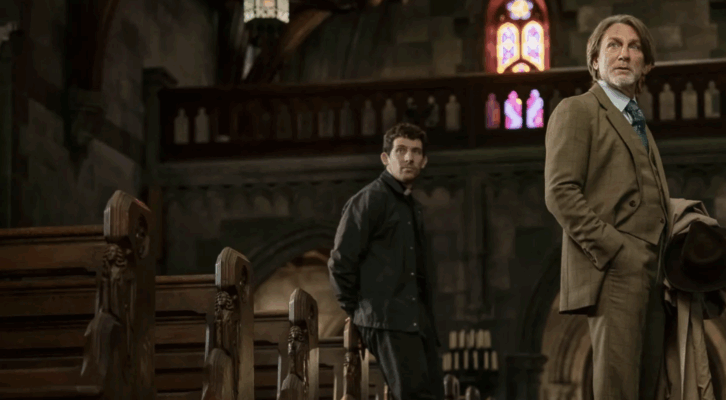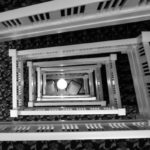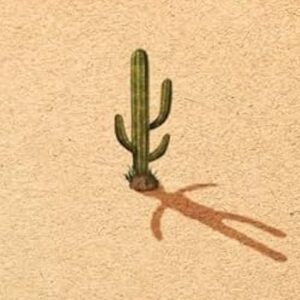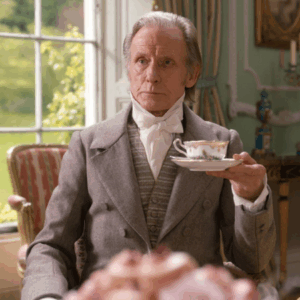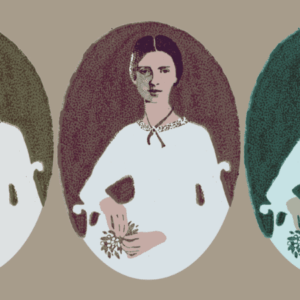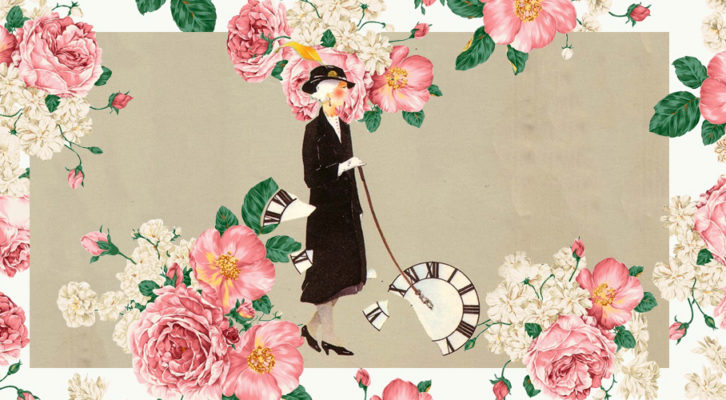
Drafting Mrs. Dalloway: How Virginia Woolf Started Her Masterpiece
“There should be some fun–”
Virginia Woolf was a messy writer. Her surviving drafts are often stained by cigarette ash or a dog’s pawprints. The large wooden tables she preferred in her writing rooms were covered with manuscripts, bottles of ink, overflowing ashtrays and the notebooks she made for herself, ruling a margin on each page with a thick blue pencil. She did not write at the table, however, but sat each morning in a low armchair, a board to which she had glued an inkstand balanced across her knees to support the notebook in which she wrote her drafts. She kept track of her progress, dating the day’s work, sometimes totting up how many words she had written, and making a note of where she had been when she drafted a particular passage.
In the afternoons she would type up what she had written, subsequently revising by hand, then retyping the pages until they were ready to be sent to a professional typist and on to the printer. She would continue to revise at the proof stage, too—a benefit of being her own publisher.
Virginia Woolf was a messy writer.
Leonard and Virginia Woolf’s life had a rhythm defined by their work and their travels back and forth between their London homes and their country house. Mrs Dalloway was written in three places: Monk’s House, in the village of Rodmell in Sussex; Hogarth House, on Paradise Road in Richmond; and 52 Tavistock Square in Bloomsbury. Years before either she or her sister had found the Sussex homes in which they would settle, Virginia imagined for Vanessa a countryside retreat with “a little cottage in the trees at the bottom of the garden.”
In that fantasy cottage, Virginia hoped she would have a room with a table, books, a looking glass and “a curious cabinet, full of small drawers’” in which her sister’s children would hunt for secrets. Woolf never did have a room at her sister’s house, but in the summer of 1921 she was thrilled to report that she and Leonard were converting a toolshed at Monk’s House into a garden room. It would have large windows through which she could look across the meadows of the South Downs to Mount Caburn.
In that garden room at Monk’s House in August 1922 Woolf jotted down in her diary some plans for the work she wished to accomplish that summer before returning to Richmond in the autumn. She and Leonard went back to London by train from Lewes on 5 October. The next day she opened a fresh page in one of the notebooks in which she had drafted her third novel, Jacob’s Room, to pin down some thoughts about “a book to be called, perhaps, At Home: or The Party.” Jacob’s Room was about to be published but Woolf’s mind was full of ideas for her next novel. She intended it to be a short book that would end with a party. The first chapter would draw on a story she had just finished writing, “Mrs Dalloway in Bond Street.” This, she thought, could be followed by another story she had been working on, titled “The Prime Minister.”
But if the modernist writers have taught us anything it is that our experience of time is rarely linear, that beneath the surface of every present moment the currents of memory run deep. Woolf herself wrote that life “is not a series of gig lamps, symmetrically arranged,” but more like “a luminous halo … surrounding us from the beginning of consciousness to the end.” Therefore, although that outline in her notebook represents Woolf starting to plan her next novel, pulling together ideas that had been brewing for a while, it would not be accurate to see it as ‘the’ beginning of Mrs Dalloway.[1]
We can identify many sources for the world created by Woolf in her fourth novel, but no specific original inspiration. The characters who populate London on a June day in 1923, a day on which Clarissa Dalloway gives a party and Septimus Warren Smith ends his life, emerged from their author’s imagination informed by her memories of growing up in Kensington, of living through the First World War, of her own mental breakdowns, even, as Clarissa says in the novel, of “people she had never spoken to, some woman in the street, some man behind a counter—even trees, or barns.”
At the time Mrs Dalloway was beginning to take shape, Virginia Woolf had only recently begun to feel confident as a writer, despite having already been practising her craft for two decades. When Leonard read the typescript of Jacob’s Room on a summer’s day in 1922 he told her that it was “a work of genius.” She wrote in her diary that she had finally discovered “how to begin (at 40) to say something in my own voice.” After Jacob’s Room, she felt that she could go on as a writer without needing praise. She had been excited by the challenge of developing the kind of short experimental fictions she had been writing since 1917 into the longer form of a novel. Jacob’s Room had shown her how she could do so.
She wrote in her diary that she had finally discovered “how to begin (at 40) to say something in my own voice.”
When she first conceived of Jacob’s Room in 1920, Woolf was the author of two more or less conventional novels (although the apparent marriage plot of the first, The Voyage Out, is derailed by the premature death of its heroine), scores of essays and reviews, and was also the co-founder of the Hogarth Press. She and Leonard had launched their press with a pamphlet containing a story by each of them, Virginia’s “The Mark on the Wall” and Leonard’s “Three Jews.”
As she began to think about the work that would become Jacob’s Room, Woolf was also re-reading her first two novels, because an American publisher had just agreed to bring them out in the United States (both had been published in Britain by Duckworth, the firm founded by her half-brother Gerald). She asked friends to let her know before she sent the books off to America if they had noticed any typos. Lytton Strachey delighted her by saying that when he re-read The Voyage Out he thought it was “extremely good.” He particularly liked her “satire of the Dalloways.”
Clarissa Dalloway, Woolf’s most famous character, makes a brief but significant appearance in The Voyage Out, a glamorous figure hitching a ride with her politician husband, Richard, on a merchant ship bound for South America. Woolf told Vanessa Bell that Clarissa was based on a friend from their youth, Kitty Maxse (née Lushington). She recalled in a memoir how the tea table at their parents’ tall house at 22 Hyde Park Gate had been “fertilized by a ravishing stream of female beauty” of whom the “paragon for wit, grace, charm and distinction was undoubtedly the lovely Kitty Lushington.” Kitty was one of those who disapproved of the young Stephen siblings’ move to Bloomsbury in 1904 after the death of their father, the eminent late-Victorian man of letters Sir Leslie Stephen. Through the grapevine, Woolf heard that Kitty disliked like her second novel, Night and Day—something Leonard wryly thought was quite a compliment.
______________________________
[1] The text of the notebook page is as follows:
October 6th 1922 Thoughts upon beginning a book to be called, perhaps, At Home: or The Party: This is to be a short book consisting of six or seven chapters, each complete separately, yet there must be some sort of fusion.
And all must converge upon the party at the end My idea is to have some very [ ] characters, like Mrs Dalloway much in relief: then to have interludes of thought, or reflection, or short digressions (which must be related, logically, to the rest) all compact, yet not jerked.
The Chapters might be,
1. Mrs Dalloway in Bond Street.
2. The Prime Minister.
3. Ancestors.
4. A dialogue.
5. The old ladies
6. Country house?
7. Cut flowers.
8. The Party.
One, roughly, to be done in a month: but this plan is to allow of some very short pages: intervals, not whole chapters. There should be some fun —
___________________________
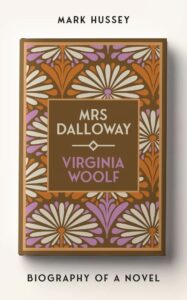
Mrs Dalloway: Biography of a Novel by Mark Hussey will be published by Manchester University Press on the 8th July (North America), out now in the UK and ROW.
Mark Hussey
Mark Hussey is Distinguished Professor of English Emeritus at Pace University in New York. He is founding editor of Woolf Studies Annual and general editor of the Harcourt Annotated Edition of the Works of Virginia Woolf, for which he edited To the Lighthouse. His recent publications include Clive Bell and the Making of Modernism (2022) and Modernism's Print Cultures (with Faye Hammill, 2016).











